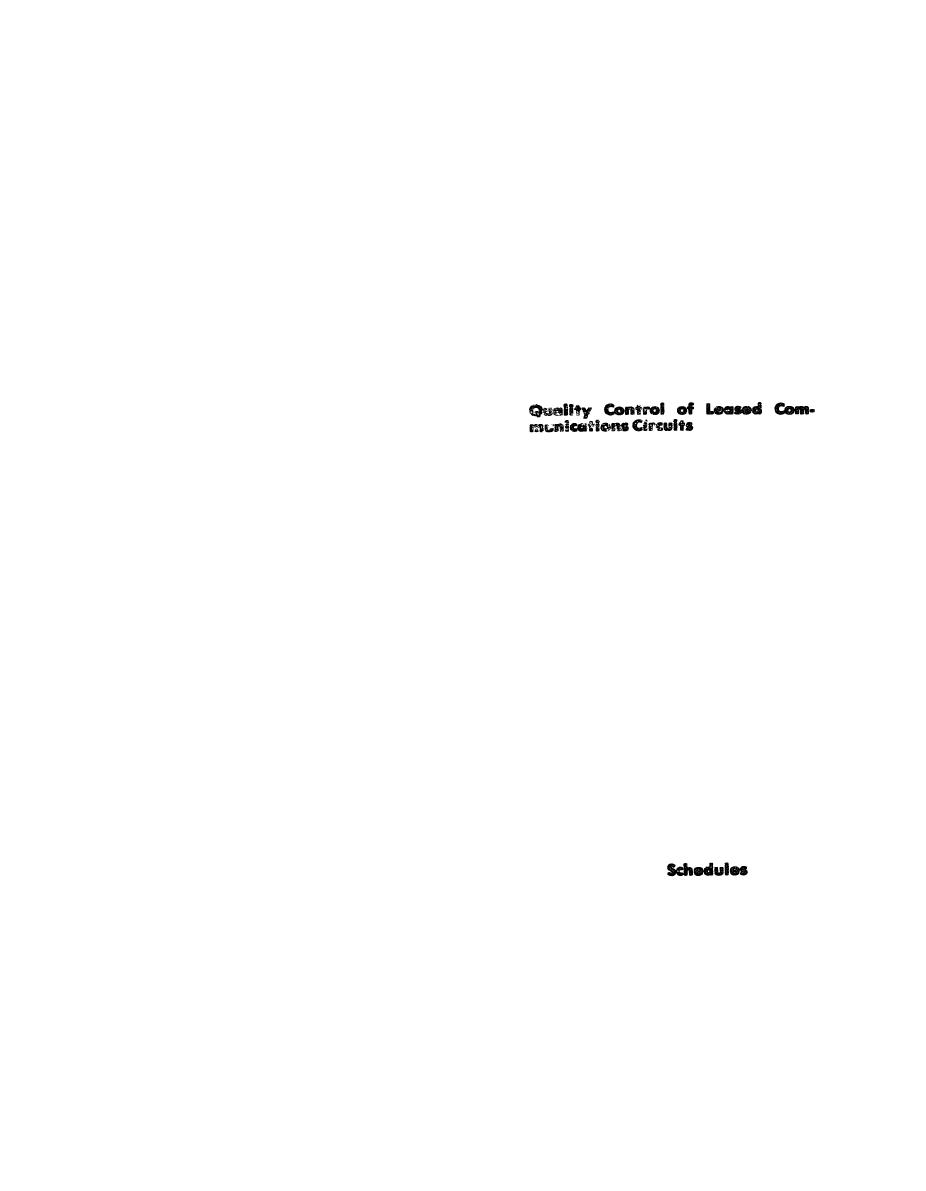 |
|||
|
|
|||
|
Page Title:
Quality Control of Government-owned Circuits |
|
||
| ||||||||||
|
|
 TM 11-5895-1012-10
thorough testing and analysis of test results. An effec-
All quality control testing of communications equip
tive quality control program consists of scheduling
ment will be conducted with the knowledge and per-
prescribed tests, measuring specific parameters, com-
mission of the TCF supervisor on duty. Operational
paring recorded measurements against applicable
equipment will be tested off-line after the completion
standards, trend analysis and directing corrective ac-
of regularly scheduled maintenance and in conjunction
tions where indicated.
with the appropriate maintenance personnel. Where
possible, equipment will be tested under maximum
loading, such as all VFCT equipment channels being
owned Circuits
keyed with test messages. A review of trend analysis
a. In-Service Quality Control Testing. In-service
should be made by TFC and maintenance personnel
quality control testing is performed regularly on all
prior to the test. This will identify channels that have
active circuits within the Technical Control Facility.
had most of the outages and degree of maintenance ad-
Measurements are made using high impedance bridg-
justments since the last scheduled test. This analysis
ing to prevent interruption of user service. Normal
may show the possibility of deteriorating components
in the equipment and that this test period may require
user traffic signals, telephone supervisory parameters
which can be measured without interruption of service
a closer examination of the item of equipment than is
and then compared to levels normally found at the
normally required during routing testing.
transmission level point of the circuit under test.
(1) The technical controller analyzes the test re-
sults to determine if corrective action is required to
The basic requirement for quality control testing of
bring the circuit within system standards or the
leased communications circuits is identical to that re-
original circuit acceptance parameters. When re-
quired on Government owned circuits, with the follow-
quired, corrective action can be accomplished by
ing exceptions:
rerouting the circuit, equipment substitution on the
a In-Service Quality Control Testing. When it is
normal path, or, when neither is possible, obtaining a
determined through in-service testing that a circuit
user release of service in order to take the circuit out
does not meet parameters contracted for in the Com-
of-service for maintenance action.
(2) If the user does not want to release the circuit
munications Service Authorization (CSA), one of the
following actions must be initiated:
because of traffic load or mission requirements and
(1) If the user states the circuit is not providing
states that the degraded circuit is providing satisfac-
satisfactory service, the circuit will be logged out-of-
tory service, the technical controller will make ar-
service with the commercial carrier for immediate
rangements with the user for release of the circuit as
corrective action.
soon as traffic conditions or mission requirements
(2) If the user states that the circuit is providing
permit.
satisfactory service and the commercial carrier cannot
(3) Appropriate maintenance elements and con-
provide immediate corrective action or reroute, cor-
nected TCF's or PTF's will be advised of the substand-
rective action will be scheduled for a time mutually
ard condition of the circuit and of the projected down-
agreeable to the user and the carrier.
time.
b. Out-of-Service Quality Control Testing. The Cir-
b. Out-of-Service Quality Control Testing. It is the
cuit Control Office will coordinate quality control test
responsibility of the TCF designated as Circuit Control
schedules with commercial carriers to ensure that the
Office to schedule out-of-service quality control test-
carriers will have personnel and *test equipment avail-
ing on all circuits over which responsibility has been
able to participate in quality control tests and initiate
assigned. Periodic out-of-service testing permits end-
corrective actions if the circuit does not meet
to-end realignment of circuits to meet applicable DCS
parameters contracted for in the CSA.
circuit parameters. Out-of-service testing usually
requires the user to release the circuit for a specified
amount of time. Where at all possible a reroute will be
provided depending upon the circuit priority.
tests shown in table 4-5 are considered the minimum
c. Communications Equipment. Scheduled quality
required. Detailed schedules will be such that these
control testing of all communications equipment sup
minimum requirements are satisfied. The TCF may in-
porting the DCS, including spares, is required. Com-
crease the frequency of testing as necessary to ensure
munications equipment may be located in other sec-
required operations. Test requirements may be satis-
tions of the DCS Station; i.e. radio and carrier,
fied by use of automatic sensing equipment which
automatic switching centers, communications centers,
measure circuit parameters and provides a record
or within the TCF itself. In most cases, there is a Patch
copy of readings or alarms which sound when present
and Test Facility associated with the section involved.
|
|
Privacy Statement - Press Release - Copyright Information. - Contact Us |